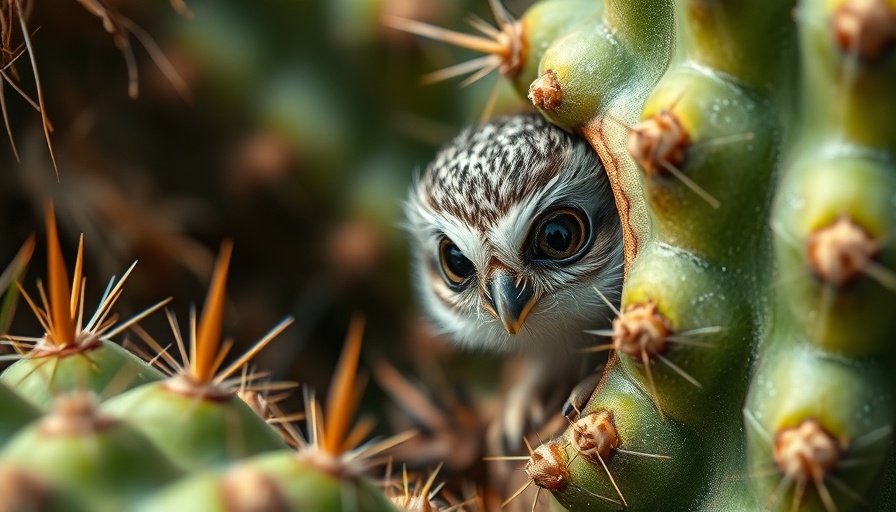
The Tiny Yet Fierce Tecolotito Enano
The tecolotito enano, also known as the elf owl (Micrathene whitneyi), is notable not just for its petite stature but for its remarkable tenacity as a predator. Weighing in at less than 40 grams—lighter than a golf ball—this diminutive owl stands at about 15 centimeters tall, sporting gray feathers and striking yellow eyes. These tiny hunters are mostly found in the southwestern United States and northern Mexico, particularly during the breeding season when they migrate back to the area around late February to March.
Yearly Migration Patterns of the Tecolotito Enano
Every year, as spring approaches, the tecolotito enano makes its journey back to its breeding grounds in the deserts of Texas and Arizona, finding refuge in tree cavities or even in saguaro cacti previously burrowed by woodpeckers. By October, they leave the United States to seek warmer climates teeming with insects in Mexico. This migration speaks to the resilience of the species, adapting to fluctuating seasonal conditions in search of sustenance and breeding opportunities.
The Diet and Hunting Methods of the Elf Owl
Don’t let their size fool you—these owls are fierce hunters. At dusk, the tecolotito enano emerges to stalk beetles, crickets, and spiders, utilizing their keen senses and sharp talons to catch prey. They are also known for their cleverness, often storing larger prey, such as scorpions with their stingers carefully removed, for future meals. This unique feeding behavior showcases their adaptability and survival strategies in the desert environment.
Interesting Facts to Appreciate
Did you know the tecolotito enano is one of the smallest owls in the world? Besides its incredible size, what sets this owl apart is its ability to thrive in various habitats—from desert scrub to subtropical forests—making it a fascinating subject for birdwatchers. Their distinct hoots and unique nesting habits also contribute to their charm, encouraging conservation efforts for their continued existence in their natural habitats.
Conclusion
The tecolotito enano represents nature's ingenuity, reminding us that size does not equate to strength. By returning each year to breed in the U.S. and adapting their hunting strategies, these owls exemplify resilience. As nature lovers and conservationists, we must cherish the diverse species like the tecolotito enano that inhabit our world, ensuring they continue to inspire future generations.
 Add Row
Add Row  Add
Add 




Write A Comment